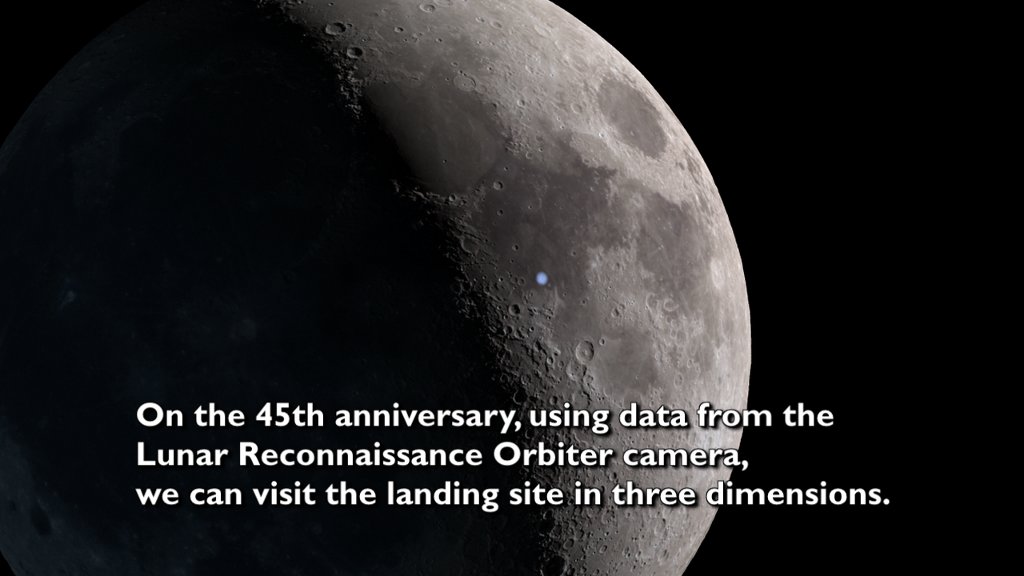Revisiting The Moon Landing
On July 20, 1969, Apollo 11 astronauts Neil Armstrong and Edwin "Buzz" Aldrin safely touched down on the near side of the moon in a large basin known as Mare Tranquillitatis. Within hours of landing, they donned their spacesuits and ventured out onto the moon's surface, becoming the first humans to step foot on another world. Now, scientists have created a 3-D model of the historic landing site using data collected by NASA’s Lunar Reconnaissance Orbiter (LRO). A camera aboard the spacecraft has been imaging the moon since 2009, providing detailed maps of the heavily cratered terrain. Included in the model is an LRO image that shows the descent stage of the landing vehicle, experiments set up by the astronauts and tracks left behind on the lunar surface. Watch the video for a tour of the landing site.

Scientists create a 3-D model of the Apollo 11 landing site.
This visualization of the landing site was created from images taken by LRO.

Astronaut Buzz Aldrin stands next to the landing gear of the lunar module.

Astronaut Neil Armstrong took this photo of Aldrin. Armstrong can be seen in the reflection of Aldrin’s helmet visor.

The astronauts spent a total of two-and-a-half hours outside the lunar module, taking photos, setting up experiments and collecting samples.

Footprints left by the astronauts on the moon are still visible today.
Credits
Please give credit for this item to:
NASA's Goddard Space Flight Center
Images courtesy of NASA
-
Animator
- Ernie Wright (USRA)
-
Producers
- David Ladd (USRA)
- Andrew Chaikin
-
Scientist
- Noah Petro (NASA/GSFC)
-
Project support
- Laurence Schuler (ADNET Systems, Inc.)
- Ian Jones (ADNET Systems, Inc.)
-
Writer
- Kayvon Sharghi (USRA)
Release date
This page was originally published on Tuesday, November 4, 2014.
This page was last updated on Wednesday, May 3, 2023 at 1:50 PM EDT.
